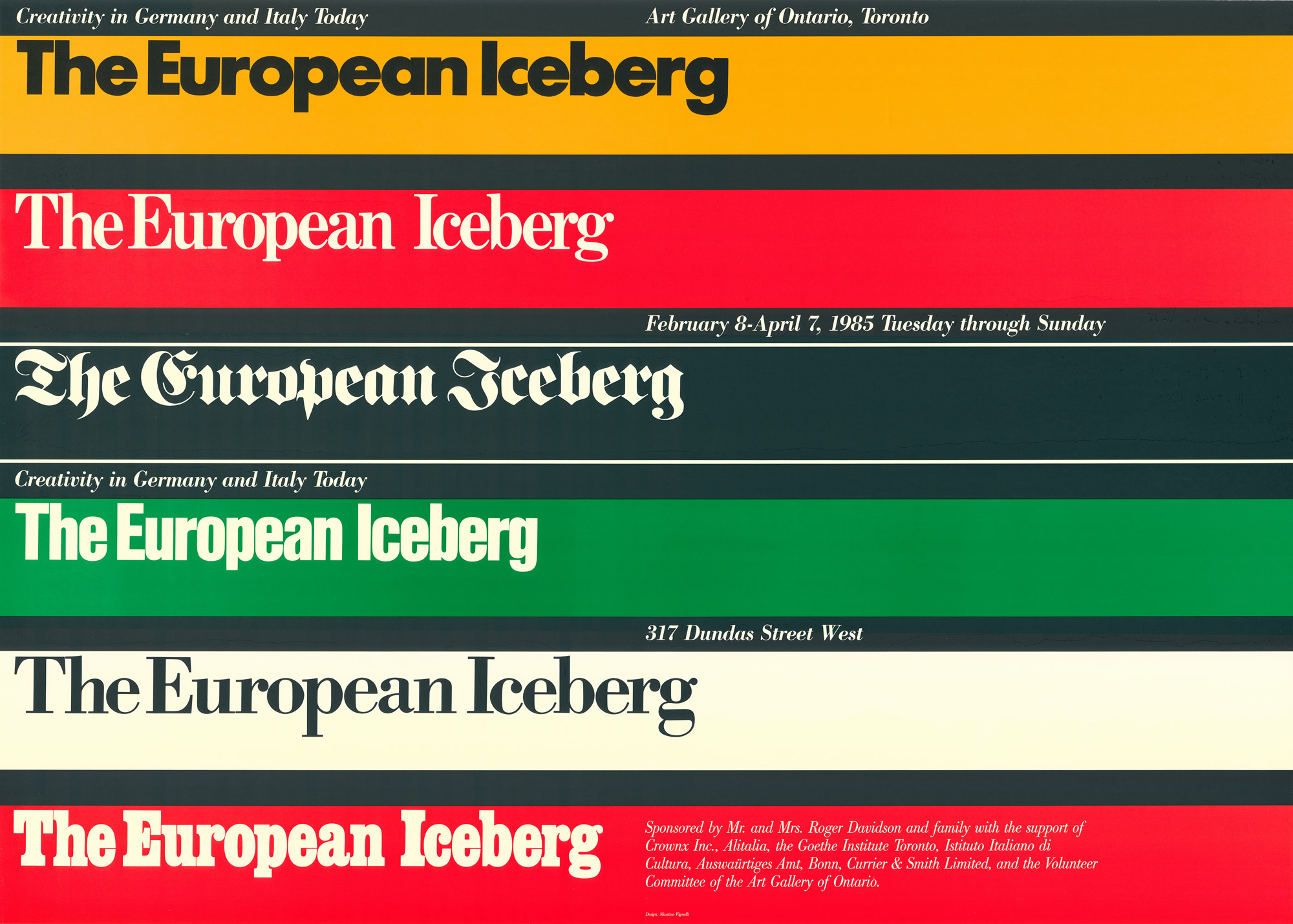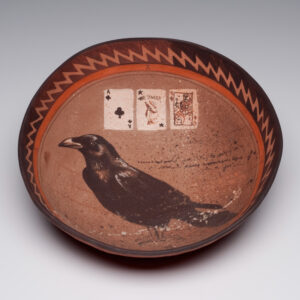The North American Iceberg 1985

Carl Beam, The North American Iceberg, 1985
Acrylic, photo-serigraph, and graphite on Plexiglas, 213.6 x 374.1 cm
National Gallery of Canada, Ottawa
© Estate of Carl and Ann Beam / CARCC Ottawa 2024
One of Carl Beam’s most important works, The North American Iceberg is a defiant statement of the artist’s disgust with the ubiquitous celebrations of European “everything” across North America. Created in response to a 1985 exhibition at the Art Gallery of Ontario titled The European Iceberg: Creativity in Germany and Italy Today, the piece is a virtual catalogue of the themes that informed Beam’s art—and a pointed critique of European rationalism, which he saw as the root cause of colonization, the genocide of Indigenous nations on Turtle Island, and the annihilation of Indigenous culture (as well as the personal sense of loss he felt at this devaluation and destruction).
The North American Iceberg’s complex image field contains multiple signs—self-portraits and portraits of prominent historical figures, stencilled and handwritten texts, and transferred documentary photographs—all collaged across a visual plane of colour splashes, passages, and drips. The transferred photographs include one coldly titled Three Graveside Figures and others depicting Egyptian president Anwar Sadat’s assassination, an eagle in flight by English photographer Eadweard Muybridge (1830–1904), and a running elk. A raven, a portrait of Apache leader Geronimo, images of an unnamed Indigenous woman, and a rocket appear as well, creating a visual lexicon of conflict and struggle.

Produced in Beam’s living room studio at 222 Carlisle Avenue in Peterborough, Ontario, The North American Iceberg is a richly allusive composition that Beam constructed layer by layer on the back of three large sheets of Plexiglas. This same innovative method can be seen in other works, such as Sauvage, 1988. Significantly, in all his Plexiglas pieces, unlike his traditional paintings, Beam built up the composition in reverse—with the details rendered in the foreground and the text laid down backwards so it would read correctly when viewed from the opposite side of the transparent plastic. Beam finished the work by applying the background colour, which in other circumstances would have been painted first. Operating in this unique fashion was a fun trick for Beam; he always challenged technical ruts and counted on chance and innovation to push himself forward artistically.
This unconventional method of construction is also a metaphor for the elasticity of time and the triumph of a pre-contact cosmology. The prominent stencilled text that reads “REVOLVING SEQUENTIAL” in part announces this triumph. It is a brilliant example of the spontaneous writing that Beam often included in his works. The pairing of the contradictory terms “revolving” and “sequential” is stimulated by the composition’s various visual signs and activates the viewer’s own associations.
Addressing as it does the fluidity of time and space, the relativity of truth and meaning, and the role played by semiotics and collage as defining Beam’s personal creative theory and practice, The North American Iceberg is a forceful declaration by an artist whose intent was to confront the evils of colonialism and state-sponsored malevolence. As the first “self-conscious” purchase of a work by a First Nations artist for the contemporary art collection at the National Gallery of Canada—the culmination of many years of lobbying by the Society of Canadian Artists of Native Ancestry (SCANA) and other Indigenous artists and art collectives—it also marks a watershed moment in the history of contemporary art in Canada. The intentional acquisition of The North American Iceberg as a work of contemporary art was important because it affirmed that Indigenous art was relevant to modern times and had a place within a national narrative.

 About the Author
About the Author
 More Online Art Books
More Online Art Books
 Acknowledgements
Acknowledgements